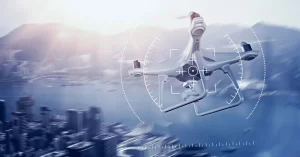Talcum powder has long been a staple in many households for its various uses, including for infants and children. However, recent studies have raised concerns about potential health risks associated with talcum powder use in children.
This article will explore the link between talc and childhood illnesses, including respiratory issues, skin irritations, and potential contamination with harmful substances.
1. Ovarian Cancer
Talc, the main ingredient in talcum powder, is a naturally occurring mineral mined for decades. It is used in various consumer products, including powders, cosmetics, and personal care items.
JOIN US TO STAY UPDATED ON YOUR FAVORITE MESSENGER APP!
Several studies have suggested a possible association between body talc use and an increased risk of ovarian cancer. As a result, numerous lawsuits have been filed against the manufacturers, with claims that their products have caused ovarian cancer in women who have used them for feminine hygiene purposes.

The talcum powder lawsuit alleged that manufacturers failed to provide adequate warnings about the potential risks of using talcum powder. Also, they should have known about the potential link between talc and ovarian cancer. Some lawsuits have resulted in significant verdicts and settlements favoring plaintiffs who developed ovarian cancer after long-term use.
According to TorHoerman Law LLC, in the year 2020, Johnson & Johnson agreed to pay a settlement of almost $100 million to resolve 1,000 talcum powder lawsuits. Additionally, 22 women received a settlement of $2.12 billion for their Talcum Powder claims in the same year.
Adding to that, it is worth noting that it should not be used from an early age in children. The reason is that according to Drug Watch, in research published in Epidemiology, case-control data on talc usage and ovarian cancer were examined during 16 years. It was discovered that ovarian cancer was one-third more common in women who often used talc on their genitalia.
2. Respiratory Issues
Talc Powder is a fine powder that can easily become airborne when applied or disturbed, and the inhalation of talc particles can pose a risk to respiratory health.
Infants and young children are particularly susceptible to respiratory issues related to its use due to their smaller airways and underdeveloped respiratory systems. Inhaling the particles can cause respiratory irritation, coughing, wheezing, and difficulty breathing. In some cases, it may even trigger or exacerbate pre-existing respiratory conditions such as asthma or bronchitis.
Several studies have reported on the potential respiratory risks of its use in infants and young children, and some healthcare specialists recommend avoiding its use on infants altogether. For example, the American Academy of Pediatrics (AAP) advises against using baby powder on infants, as it may harm their respiratory health.
3. Skin Irritation
The talc-based powder is often applied to the skin to absorb moisture and reduce friction. Still, it can also cause irritation and inflammation, especially in sensitive body areas.
The fine particles in fine powder can clog pores, leading to skin irritation, redness, itching, and rash. By the extended use on the skin. These are especially evident in areas such as the genital region, underarms, or inner thighs, which can exacerbate skin irritation and even cause more severe dermatological conditions such as contact dermatitis or eczema.
Several studies have highlighted the potential skin irritation risks associated with it. As a result, some healthcare clinician recommends avoiding talc-based powder altogether or opting for talc-free alternatives.
4. Lung Problems
Lung problems, such as respiratory distress or lung damage, have been reported to be associated with talcum use. In addition, the fine particles of talc-based powder can become airborne when applied or disturbed, and inhaling these particles can potentially pose risks to lung health.
Inhaling these particles can irritate the respiratory tract, leading to coughing, wheezing, and breathing difficulties. In addition, prolonged or repeated exposure to the particles in the air may increase the risk of developing respiratory issues such as bronchitis or pneumonitis, which is an inflammation of lung tissue.
A serious lung infection known as pulmonary talcosis in any age group is another health danger associated with talc inhalation that has been scientifically proven.
For instance, a case report from Consumer Notice details a 31-year-old woman who had talcosis after using a lot of cosmetic talcs every day for several years. Joint pain and shortness of breath were the woman’s main complaints. In addition, her lungs had several aberrant growths and signs of inflammation, according to a CT scan.
While the talc-based powder is considered safe for external use, its potential risks to lung health have raised concerns. Several studies have highlighted the possible link between the use and lung problems.
5. Eye Irritation
Body talc is often used in cosmetic products, including powders and eyeshadows, and it can pose a risk to eye health if it comes into contact with the eyes.
The fine particles in talc-based powder can be easily airborne, and if they come into contact with the eyes, they can cause eye irritation, redness, tearing, and discomfort. In some cases, talc-based powder particles can scratch the cornea, the clear outer layer of the eye, leading to more severe eye irritation and potential eye damage.
Several studies have reported on the potential eye irritation risks of talcum powder use, especially when applied near the eye area. As a result, some healthcare professionals caution against using talcum powder on or near the eyes and recommend using safer alternatives for cosmetic purposes.
6. Legal Issues
Legal issues related to body powder and childhood illnesses can arise when parents suspect their child’s health issues are linked to powder use. For example, suppose a child has experienced respiratory, skin, eye, or other health problems due to the use. Parents may seek legal guidance to understand their rights and options in that case.
One potential legal issue is product liability. For example, if a product is found to be defective or dangerous, the manufacturer, distributor, or retailer may be held responsible for the harm caused to the child.
It may involve proving that the talc was unreasonably dangerous and that the child’s health issues resulted from using it as intended. Also, the manufacturer or other parties failed to provide adequate warnings or instructions.
Children who use talcum powder might face health hazards
According to the Business Research Company, at a compound annual growth rate (CAGR) of 13.8%, the worldwide talc market size will increase from USD 9.25 billion in 2022 to USD 10.53 billion in 2023.
Additionally, its market is anticipated to reach USD 17.68 billion in 2027. As its market grows, it will pose potential health risks to children, which parents must be aware of.
Consulting with healthcare clinicians and staying informed about the latest research and safety guidelines is essential. By being proactive and informed, parents can take steps to protect their child’s health and well-being.
ⓘ As part of our ongoing support for startups and SMEs, LAFFAZ Media publishes feature and resource articles that may include references and links to external websites. These inclusions are selected at our editorial discretion to provide valuable information to our readers. LAFFAZ Media does not control, endorse, or assume responsibility for the content or practices of external websites. For more details, please refer to our Terms and Conditions.





